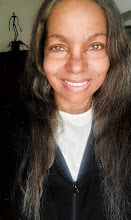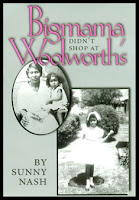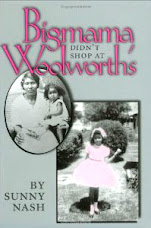 |
| Silhouette of Sunny Nash On-Location at Khmer Conference Photo by Keith Jerome Lilly, Founder Developing Future Leaders |
"I realized, even as a child, that I wanted to leave my mark," Nash said. "And in order to leave a mark, I knew I had to make a mark. I observed my grandparents, parents and others in my life to see how to create something of value to leave behind. And to make a record of it, I knew I had to save things like my people did. My mother saved her academic papers, among many other articles that I have the privilege of preserving for others to appreciate and to study far into the future."
 |
| Littie Nash (Sunny Nash's Mother) University of Texas State Licensing - Food Safety |
"I watched my mother meet the postman who delivered her books and lessons for her correspondence courses," Nash said. "Those methods of study resembled today's online study. In the 1950s and 1960s, though, there was no Internet. It was all handled by mail. The reason my mother chose correspondence courses was because many schools and professional training programs did not allow people of color or women. And some professional training correspondence programs were more concerned about validating tuition fees than racial or gender identity records."
 |
| African American, Native American and Irish Artifacts of Littie Nash (Sunny Nash's Mother) |
"Race and ethnicity make up only a portion of a person's cultural heritage," Nash said.
"The unfortunate truth is that so many people ignore part of who they are or they are not aware of all they are or they fail to adequately acknowledge the culture in which they live. If we could possibly start to appreciate all that we are, then maybe we can increase our appreciation of who others are."
The annual Khmer Parent Association Mother and Daughter Conference, which presents focus groups, mother-daughter discussion panels, question and answer sessions, exhibits and other activities, is a resource for all women and girls to share experiences. The Khmer Parent Association was co-founded by Chan Hopson, who has been executive director of the organization for more than ten years and organizes the annual event. Hopson and many others who participated in planning and executing the Khmer event all understand the importance of women recognizing and sharing their concerns, stories and accomplishments.
"And because of my participation in the Khmer conference," Nash said, "my mother and I were both celebrated with a Pearce Award."
 |
| Sunny Nash Award |
Sunny Nash said the Khmer Parent Association Mother and Daughter Conference was particularly significant to her because it gave her the chance to reflect on what her mother meant to her and what her mother did for her; and to share with others how her mother's lessons were less about telling and more about showing.
"Because of my mother's influence, I have assumed the responsibility of preserving the records she and my father, my grandparents and my ancestors left," Nash said. "Preserving what they felt important is the least I can do for those who struggled before me and managed to keep records of what they did. When we are all gone, those records will stand to illustrate to humanity that we lived and will represent the story of me and my people--who we were, what we did and how we did it."
-30-
Sunny Nash is an award winning writer and three-time winner of Arts Council for Long Beach Professional Artist Fellowship Awards: 2003, 2009 and 2014-15. Her most recent Arts Council for Long Beach award is a 2016-17 grant for cultural heritage preservation programs, How a Child Build Legacy, designed to encourage young students to prepare archives of their accomplishments and plan for their future achievements.
Sunny Nash
Author-Journalist |
|
Hard Cover
Amazon Kindle
|
Sunny Nash, former nationally syndicated newspaper columnist, is the author of a nonfiction book about life before and during the Civil Rights Movement with her part-Comanche grandmother, Bigmama Didn’t Shop At Woolworth’s, selected by the American Association of University Presses as a Book for Understanding U.S. Race Relations, and recommended by the Miami-Dade (Florida) Public Library System for Native American Collections.
Sunny Nash earned a Bachelor of Arts in Journalism & Mass Communication, Texas A&M University; Postgraduate Media Studies Certificate, Cronkite School of Journalism & Mass Communications, Arizona State University; Postgraduate Diploma, Instructional Technology, University of California, San Diego; Constitution Studies, James Madison’s Montpelier Center for the Constitution; and Postgraduate Digital Literacy Certificate, Simmons College Graduate School of Library & Information Science, Boston. Sunny Nash’s international studies include Intellectual Property Law, World Intellectual Property Organization Academy, Geneva, Switzerland; Diplomacy, Culture and Communication, United Nations; Research Methodology, Digital Preservation, Online Archival Information Systems, University of London; and Archival Data Governance, National Archives of Australia, Melbourne.
© 2017 Sunny Nash. All Rights Reserved Worldwide.
www.sunnynash.blogspot.com
~Thank You~








